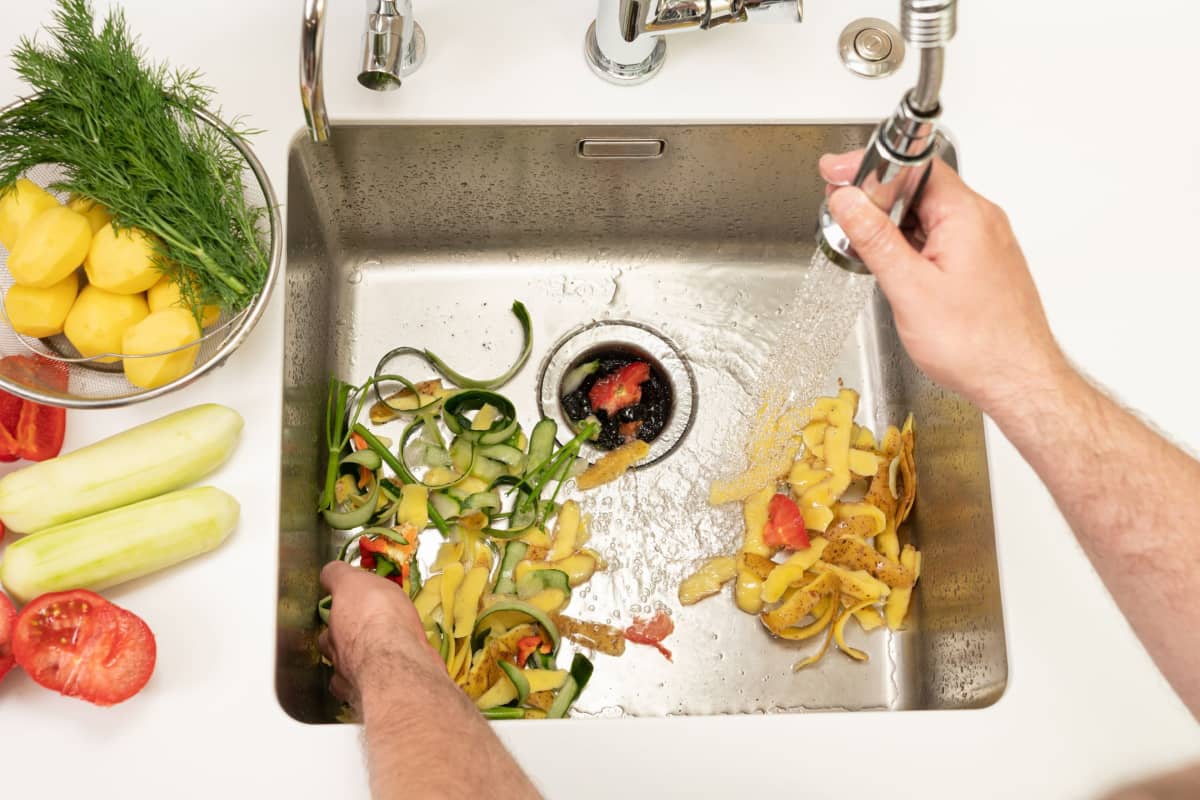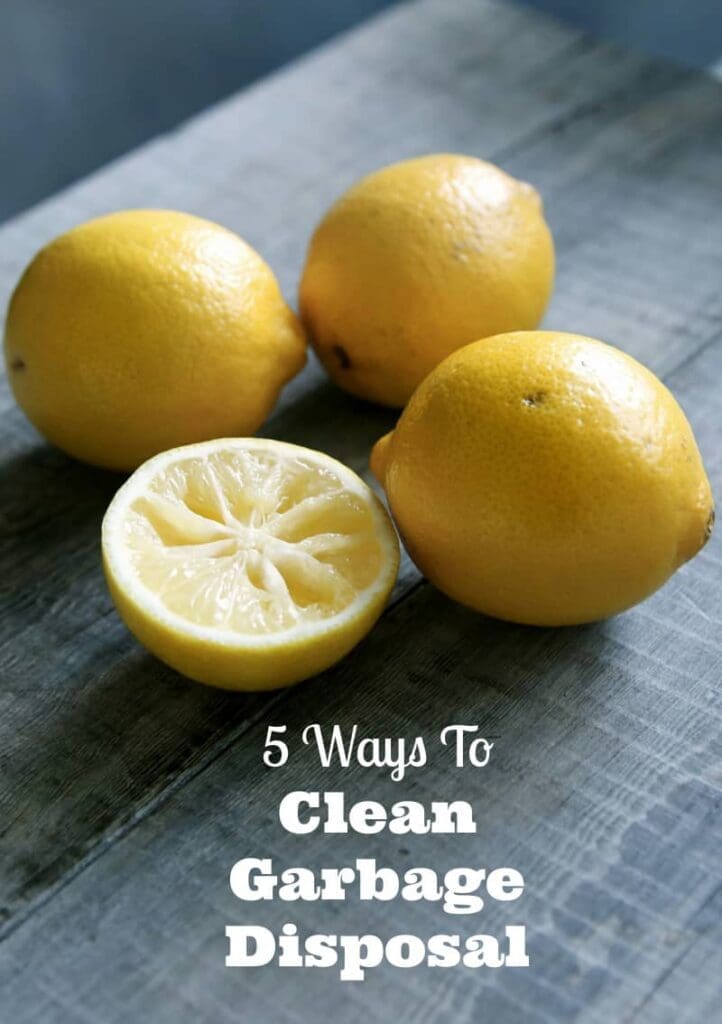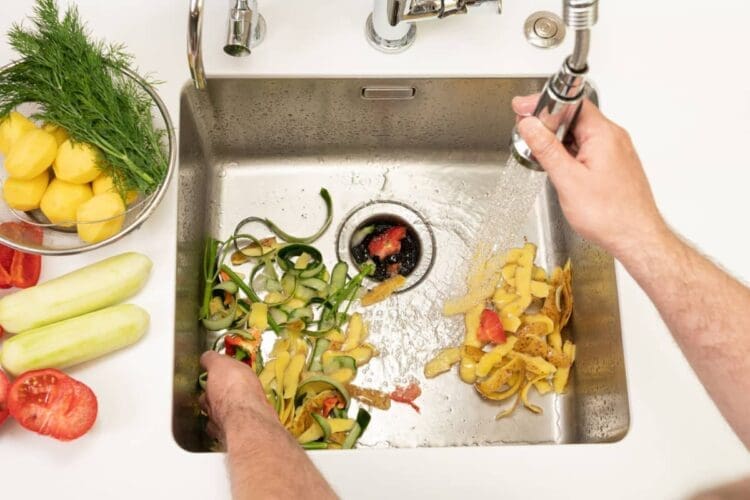
[ad_1]
A clean garbage disposal is essential for maintaining a fresh and efficient kitchen. While it’s easy to ignore this hidden appliance, neglect can lead to unpleasant odors, clogs, and even breakdowns. This step-by-step guide will walk you through cleaning your garbage disposal to ensure it operates smoothly and remains odor-free.
Understanding Your Garbage Disposal
Before initiating the cleaning routine for your garbage disposal, it’s crucial to grasp its operational mechanics. This appliance is engineered to grind food scraps into minute particles efficiently, flushed out by water through the plumbing system. Some key components of garbage disposal include:
- Motor: Being the powerhouse of the unit, it drives the system to perform its grinding function.
- Shredder Ring: Positioned inside the disposal, this feature helps finely slice food waste into tiny bits.
- Impeller Arm: This component works in conjunction with the shredder ring, aiding in the mechanical breakdown of food by forcing it outward towards the shredder.
Understanding these parts and their functions can aid in proper maintenance and help in troubleshooting issues, ensuring that the disposal operates efficiently and extends its lifespan.

When To Seek Professional Help
While regular maintenance can be handled at home, certain problems require professional attention. If your disposal isn’t working properly and you suspect it might be more than just a routine issue, professional plumbers should be consulted. They’re best equipped to determine whether the issue is mechanical or an electrical problem. Relying on experienced and honest professionals ensures your appliance will be properly diagnosed and repaired.
Therefore, if you’re looking for an experienced professional to handle your disposal’s electrical and related issues, you can check out reputable resources online.
Safety First
Safety is the top priority when maintaining your garbage disposal. Before you start any work, make sure the power is completely disconnected. You can achieve this by unplugging the disposal directly from its power source or switching off the circuit breaker that controls it. It’s also crucial to remember NOT to insert your hands or any tools into the disposal while it’s powered to prevent accidents. This precaution can help avoid potential injuries or damage to the unit during maintenance.
A lot of people want to know, can you put drain cleaner in a garbage disposal? This is NOT recommended. Drain cleaners, especially those that are highly acidic or caustic, can damage the metal components of the garbage disposal and the plumbing system. Furthermore, drain cleaners can cause chemical burns and other injuries if not handled properly. Using them in a garbage disposal increases the risk of splashes or fumes when the disposal is operated.


How To Clean Garbage Disposal
Proper routine cleaning of your garbage disposal can significantly enhance its performance and longevity which is essential in maintaining an efficient kitchen. I always prefer natural cleaning products when they are effective and the ingredients listed work great for garbage disposal cleaning. Below are the essential practices needed to maintain your appliance:
Step 1: Flush With Water
Start by flushing out loose debris by running hot water through the disposal for about a minute. Hot soapy water can help clean the drain of food residue and oil build up that may cause a smelly garbage disposal.
Step 2: Manual Scrubbing
After ensuring the power is off, reach into the disposal with a cleaning brush, old toothbrush, or a scrub sponge to clean around the grinding chamber and the rubber splash guard. Be gentle to avoid damaging any components.
Step 3: Ice And Salt
Pour a cup of ice cubes followed by a half cup of rock salt into the disposal. Restore power and run the disposal. Combining ice and salt can help scrub the grinding elements and remove trapped debris. Salt is favored for cleaning because of its antibacterial properties.
Step 4: Baking Soda And Vinegar
Vinegar can work to kill microorganisms while neutralizing bad odors. For a deeper clean, pour in a half cup of baking soda followed by a half cup of white vinegar. This will cause a fizzing action that helps loosen grime and buildup. Let it sit for 15 minutes, and then flush thoroughly with hot water.
Step 5: Citrus Freshness
Finally, grind some citrus peels, such as lemon or orange, to leave your disposal smelling fresh. The lemon peels will help clean the blades and leave a pleasant scent. This is sometimes considered the best garbage disposal cleaner because citrus peel contains a compound called di-limonene with amazing de-greasing properties.
Preventing Future Problems
Maintaining a clean garbage disposal isn’t just about cleaning—it’s also about prevention. Here are some tips to keep your disposal running smoothly:
- Avoid Hard Objects: Keep hard and fibrous materials out of the disposal. Items like bones, fruit pits, and celery stalks can damage the blades or motor.
- Run Regularly: Use your disposal regularly to prevent rust and corrosion and keep all parts moving and functional.
- Cold Water: Always use cold water when running the disposal as it solidifies any grease or oils, which can then be ground up and flushed away. Always run water for 30 seconds after you have turned off the disposal to wash away all the sediment.
- Proper Waste Disposal: Understand what should and shouldn’t go down your disposal. Avoid non-food items like nut shells that make break your blades. Don’t pour greasy substances down that drain that which can build up and cause blockages. Avoid potato skins with their starchy build up.


Troubleshooting Common Issues
If your disposal isn’t working as expected, here are a few things you can check:
- No Power: If the disposal won’t turn on, ensure it’s plugged in, and the circuit breaker hasn’t tripped.
- Humming Sound: A humming sound without grinding usually indicates a jam. After ensuring the power is off, check for hard items that may have fallen in like a olive pit. If you don’t feel any foreign objects, use a hex wrench on the breaker socket beneath the unit to manually turn the blades.
- Leaks: If you notice leaking, it could be from the kitchen sink flange, the dishwasher connection, or the drainpipe. Tightening connections or replacing worn gaskets can often resolve this.
Conclusion
Regular cleaning and maintenance of your garbage disposal can extend its life and prevent many common problems. By following this comprehensive DIY guide, you can keep your disposal in top condition, ensuring it continues to function effectively and free from foul odors. For more serious issues, remember that professional help is just a call away.
Related Posts:
Best Refrigerator Odor Eliminator Tutorial
How To Clean A Bathtub Drain
[ad_2]